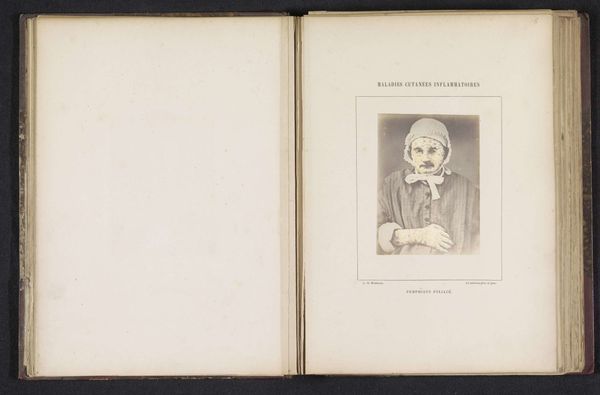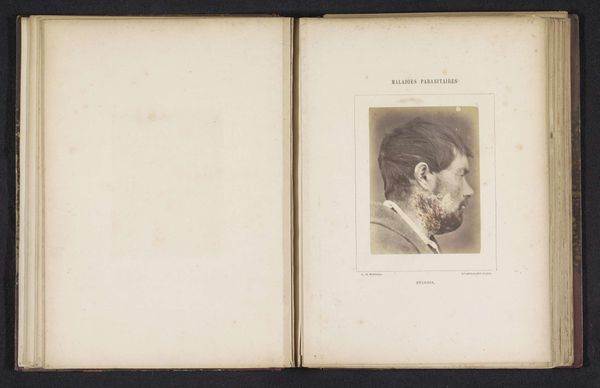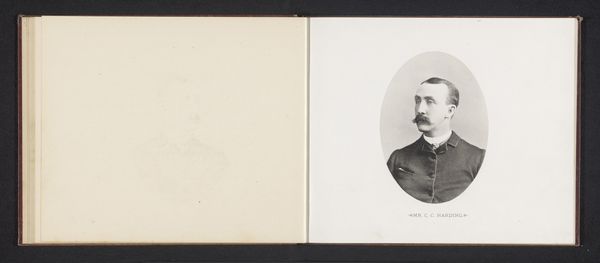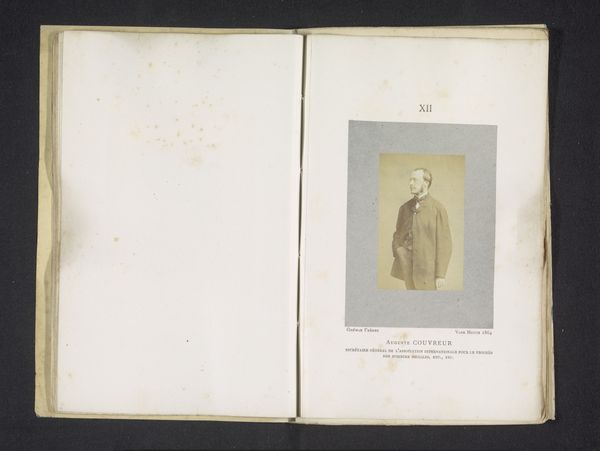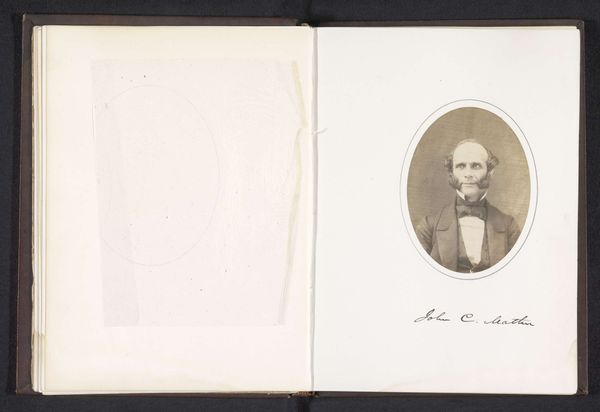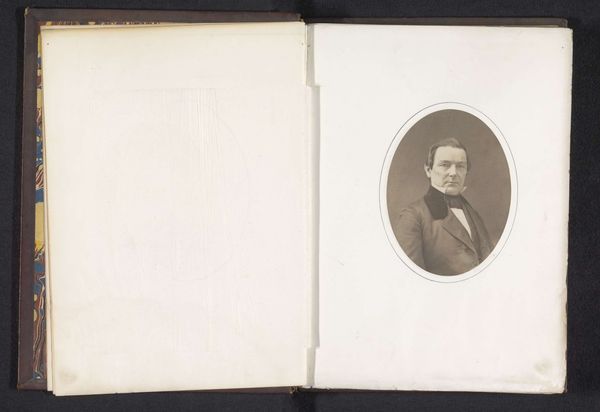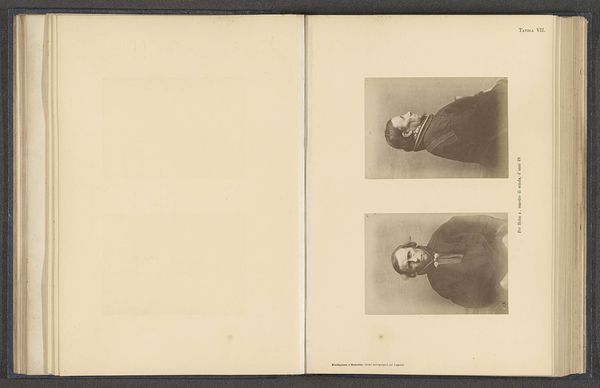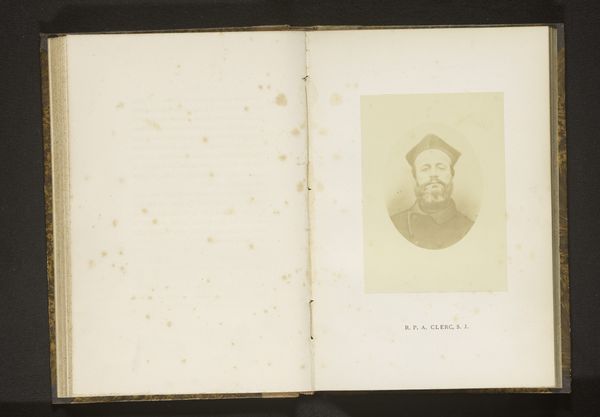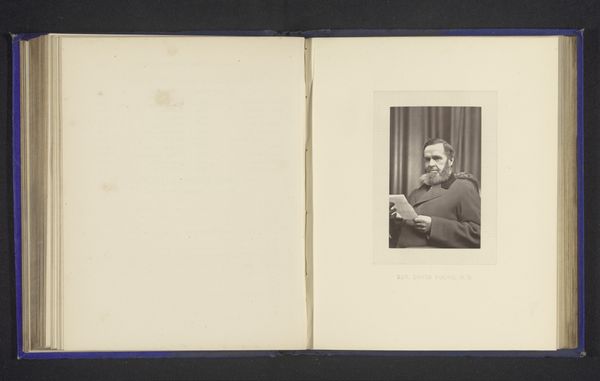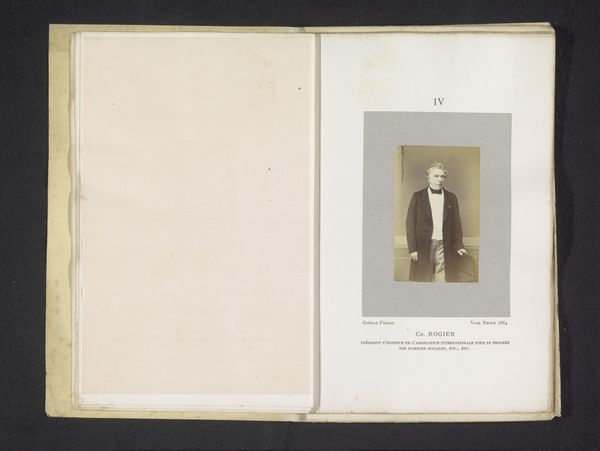
Portret van een onbekende man met zweren in zijn gezicht en een missende neus en lip, mogelijk veroorzaakt door koningszeer en tuberculose c. 1860 - 1868
0:00
0:00
photography
#
portrait
#
photography
#
genre-painting
#
realism
Dimensions: height 117 mm, width 89 mm
Copyright: Rijks Museum: Open Domain
This photograph by A. de Montméja depicts an unknown man afflicted by severe facial ulcers, possibly from tuberculosis. Consider how disease itself becomes a symbol, a visible manifestation of internal struggle. The missing nose and lip are not just physical absences but potent signs of decay, echoing the vanitas motifs of skulls and rotting fruit in earlier still-life paintings, reminding us of mortality and the transient nature of beauty. Across epochs, the image of disease recurs. Think of the lepers in medieval art, set apart, marked by their afflictions. The sores and lesions invite a deep, often subconscious, emotional response. The image taps into our primal fears of contagion and mortality, eliciting empathy but also repulsion. This emotional complexity underscores the powerful, lasting effect of such visual symbols. We see how the visual language of suffering resurfaces, evolves, and takes on new meanings, continuously engaging us in a dialogue about our shared human condition.
Comments
No comments
Be the first to comment and join the conversation on the ultimate creative platform.
